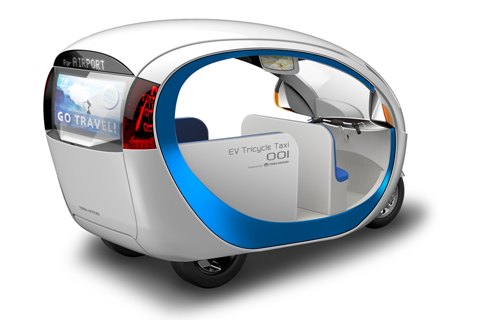
04 Apr Earth Matters: Asia Chooses a Greener Path
As self-serving politicians funded by the fossil fuel industry inhibit progress in America, Asian countries are quickly moving towards reducing risk, building resilience, and creating new economic opportunities by abandoning the business-as-usual approach in favor of going green.
By 2020, China, India, and Japan will be three of the five largest economies in the world and add 110,000 people every day to a regional population that will exceed 4.5 billion. To put this in perspective, there will be more middle-class consumers in Asia than there will be in America and Europe combined. Consequently, Asia will have to run a gauntlet of challenges over the next decade.
Top on Asia’s list of challenges are some of the issues currently plaguing America: overdevelopment, poverty, healthcare, food security, water shortage, terrorism, inadequate transportation systems, political gridlock, and environmentally hazardous energy production. Particulate matter in America from sources like coal burning power plants kills more people every year than heart disease.
Faced with an existential task to go green or go bust, Asia leaders realize that only by adopting progressive, greener methods will they be able to achieve sustainable economic growth without causing devastating impacts. At the 18th National Congress of the Communist Party of China in 2012, the General Secretary proclaimed that environmental protection is a strategic component of renewing the Chinese nation. The key sectors targeted for China’s green revolution include energy production and use, transportation, and urban development. As a means to facilitate China’s green movement, the government has set a target goal to procure 20% of its energy from renewable sources by 2030.
True to their progressive vision of a sustainable future, the Chinese have also begun developing eco-friendly cities such as the 350,000 resident sustainable community of Tianjin. Spanning 18.7 square miles, Tianjin will showcase innovative energy-saving technologies along with efficient waste management and mass-transportation systems. Highlights of Tianjin will include an advanced light rail system and varied eco-landscapes ranging from a sun-powered solarscape to a greenery-clad earthscape.
As of December 2012, China has overtaken Europe in creating the world’s longest high-speed rail network. Stretching 5,800 miles with an average speed of 124 mph or higher, Chinese can now travel from Beijing to Jinan, a distance of about 250 miles, in 1 hour and 32 minutes. In comparison, a ride on the antiquated American rail network takes 2 hours and 45 minutes to travel a slightly shorter distance of 230 miles from Washington DC to New York City.
In addition, China spent approximately $4.3 billion in 2013 on the development of smart grids, which for the first time exceeds U.S. investments in smart grids and accounts for almost a third of the world’s total. Smart grids help reduce the cost of energy transmission by assisting power generators to optimize supply to demand. They also encourage efficient energy use by allowing energy consumers to monitor their usage. As a result of mounting pollution problems and their political support for “green” policies, programs, and enforceable regulations, the nation of China was the global leader in the clean energy race in 2012. According to a report released by Pew Charitable Trusts and Bloomberg New Energy Finance, an international diversity of private investors plowed $65 into Chinese wind farms, solar panel arrays, and other clean energy projects, which was nearly twice as much as the green energy investment in the U.S. As a result of Asia’s policy and financial commitment to developing renewable energy sources, the amount of renewable energy that can be generated worldwide grew by 16%.
Similarly to China’s embrace of environmental protection policies and the development of renewable energy sources, an increasing number of nations in Asia have joined China on a greener pathway towards a sustainable future. Notably, India has approved a $41.5 billion investment in 2012 for a sustainable mass-transportation system and the Philippines is currently developing geothermal energy sources to mitigate the use of imported fossil fuels. Japan has also proposed a new renewable energy tariff program intended to ease the focus on solar power and promote a multiplicity of renewable energy sources in order to facilitate energy security.
Not to be left behind, a few American manufactures like automotive newcomer Tesla Motors have expanded their market to Asia in order to capitalize on the lucrative economic opportunities generated by sustainable development. Recognizing a potential niche for the mass production of an electric Tuk-tuk to replace the obsolete fossil-fuel- powered three-wheelers that are a common mode of public transportation throughout Asia, the futuristic electric Tesla Tuk-tuk will reduce greenhouse gas emissions and save money. Impressively, Tesla has garnered a high-powered list of investors like the former executives of Apple Japan, Google Japan, Sony, and Compaq.
Hopefully, more American corporations and manufactures will take notice of the potential social, economic, and environmental opportunities of going green and choose a pathway that would lead our great country towards a sustainable future.
Editor’s note: Earth Matters is largely penned by Billy Mason, an environmental studies instructor at Prescott College who focuses on environmental policy and climate change planning. He is also an environmental science writer, a Climate Reality Project leader, and a sustainability coordinator. Billy is an alumnus of the University of Hawai’i at Hilo, Prescott College, and the Clinton Global Initiative University, He serves as a researcher for the Aspen Global Change Institute and as a science instructor at the Mokupapapa Discovery Center in Hawai’i. An accomplished mountaineer, aviator, and surfer who has worked around the world from Telluride to Sri Lanka, Billy has manifested a personal connection with nature’s elements and a diversity of cultures.






Sorry, the comment form is closed at this time.